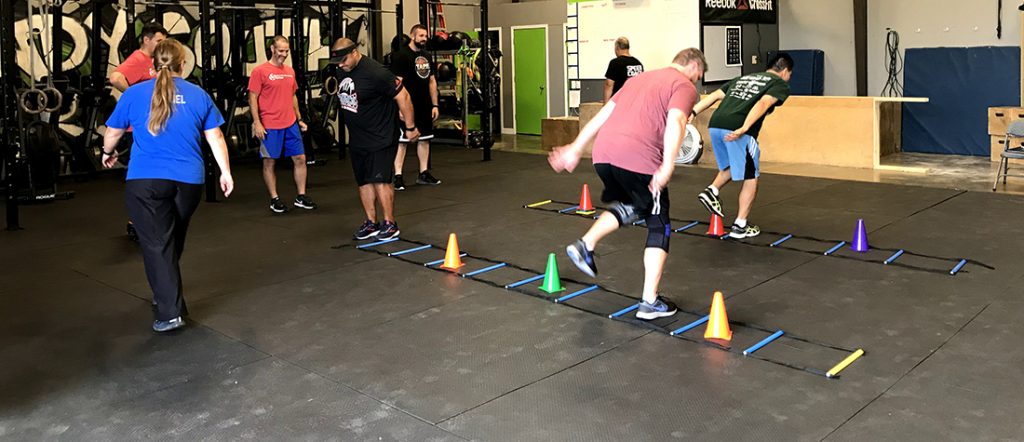Body control is a broad subject due to the fact it is governed by so many systems in the body. To keep it simple stayed with the exercises that help the athlete control posture, body angles, and mass and momentum. Plus, these are exercises and tools we know to most coaches.
Some of the key factors to consider with body control are making sure the athletes have good flexibility, mobility, and stability in order for the body to move comfortably and not compensate. A simple ankle sprain from six months ago can cause body control to be less than optimal. If we don’t fix the issues in the ankle through mobility exercises, the body control will suffer.
Consider using a ladder, dot drill, cones, low box, and your good ole body to train body control exercises. The reason to chose these exercises is that most coaches have access to all of them. And, these implements keep the movement very controlled and reproducible. This is important in the initial stages of training.
Factors to consider:
- Controlling shoulder sway- if the shoulders are free to roam they will cause problems.
- Center the upper body and move the lower body- this allows for proper deceleration and acceleration angles.
- Control hip height- if the hips are going up and down when they do not need to the movements will be slow and less efficient.
- Control the head- this doesn’t always mean keep it still. It is important at times to use the head as a driver. This trains the body to adjust vision and balance.
- Maintain an athletic posture as much as possible. When the body posture goes, key muscles can turn off and create a loss of balance.
- Always move the feet to maintain balance when needed, to create better acceleration angles, and for deceleration.
Body control is very evident in sports like gymnastics, diving, and court and field sports when athletes show great agility. You can train it in young athletes many times just by exposing them to various activities that challenge control of their bodies.

